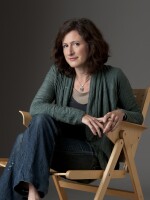MELISSA BLOCK, host:
From NPR News, this is All Things Considered. I'm Melissa Block.
ROBERT SIEGEL, host:
And I'm Robert Siegel. In a lot of ways, basic cable TV, the channels with commercials that are below, say, channel 99, is looking more and more like the big broadcast networks, and the ratings on cable are generally going up while the networks are on a gently decline. But as NPR's Neda Ulaby reports, the success of basic cable comes at a price, and we're not talking about your monthly bill.
NEDA ULABY: Just for a second, let's pretend it's the 1980s, and you love the performing arts. Let's say you go to cable TV to watch Belgian documentaries about the avant garde choreographer, Pina Bausch.
(Soundbite of cable TV clip)
ULABY: Today, almost 10 times that watch just one amazingly successful Bravo show, "Project Runway."
(Soundbite of TV show "Project Runway")
Ms. HEIDI KLUM (Host, Project Runway): Welcome to the runway. As you know, in fashion, one day you're in, and the next day you're out...
ULABY: What happened with Bravo between Pina Bausch and Heidi Klum? Entertainment Weekly writer Whitney Pastorek sums it up in six words.
Ms. WHITNEY PASTOREK (Writer, Entertainment Weekly): "Queer Eye for the Straight Guy."
ULABY: Now, Bravo shows are about cutting hair and working out, decorating and dating. Before "Queer Eye's" debut in 2003, Bravo never attracted more than 1.3 million viewers. "Queer Eye," at its peak, brought in three million. Andy Cohen is Bravo's senior VP for programming. He says the show opened Bravo's eyes to the possibility of enormous audiences.
Mr. ANDY COHEN (Vice President for Programming, Bravo TV): You know, it was really about finding then, after "Queer Eye," what stuck and resonated for our viewers and then building on the stuff that stuck and resonated.
ULABY: What stuck was not Pina Bausch. It was "Top Chef" and "Real Housewives of Orange County." By generously expanding its definition of arts programming, Bravo positioned itself to compete not just with other cable channels, but the major networks. And Bravo is far from alone. About 60 percent of Americans have basic cable, so cable channels are leaving their specialized niches to court the maximum number of viewers.
The major networks broadcast everything from forensic dramas, to reality shows, to news specials, and basic cable is now behaving the same way.
(Soundbite of TV preview)
Unidentified Man: Next on "Ice Road Truckers..."
ULABY: The History Channel has shows about truckers and loggers. MTV's flagship channel barely plays music videos anymore. And there's a show called "What Not To Wear" on The Learning Channel.
Ms. PASTOREK: What are we learning? I don't know.
ULABY: EW writer Whitney Pastorek also points to the channel formerly known as Court TV, now called truTV, and AMC, celebrated for its original series, "Mad Men." So what's up with that? Shouldn't AMC show American Movie Classics?
Ms. PASTOREK: I guarantee you, if you walked out into a mall in anywhere America and said what does AMC stand for, about six people wouldn't know the answer, and the rest of them would probably think you were trying to talk about politics, and they'd move away.
ULABY: Pastorek brings up a critical point, says media analyst Derek Baine of SNL Kagan.
Mr. DEREK BAINE (Media Analyst, SNK Kagan): I think that it becomes very confusing to the consumer when you start to get away from your core programming mandate.
ULABY: Of course, some channels do not need to go too far. Those covering sports, news, kids programming, and food.
Mr. BAINE: If there's a big enough audience, then, you know, that can work.
ULABY: But Baine says some channels that have not diversified their programming probably should. For example, he says the Science Channel and the Travel Channel focus their programming narrowly. They need to change their strategy to survive. The glory day of basic cable mining a specialized niche may be over, but Baine says you can still find programming that's narrowly targeted. Not long ago, Baine sat through a proposal for a knitting channel. A bad idea for basic cable, Baine says, but perfect for the Internet or Video on Demand. Neda Ulaby, NPR News. Transcript provided by NPR, Copyright NPR.



